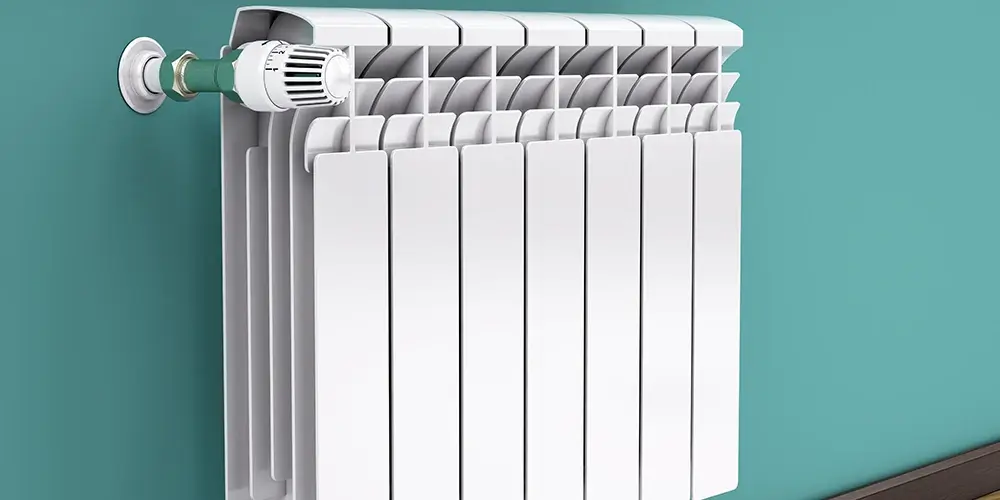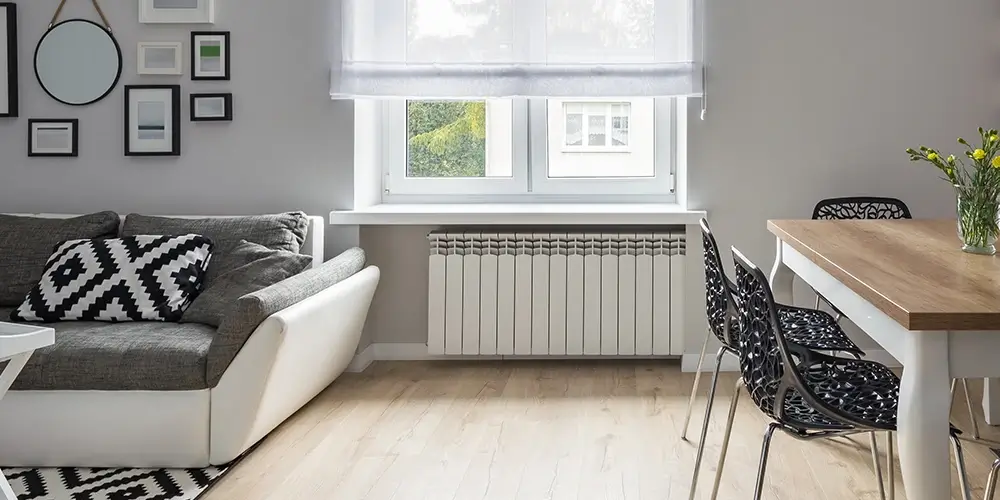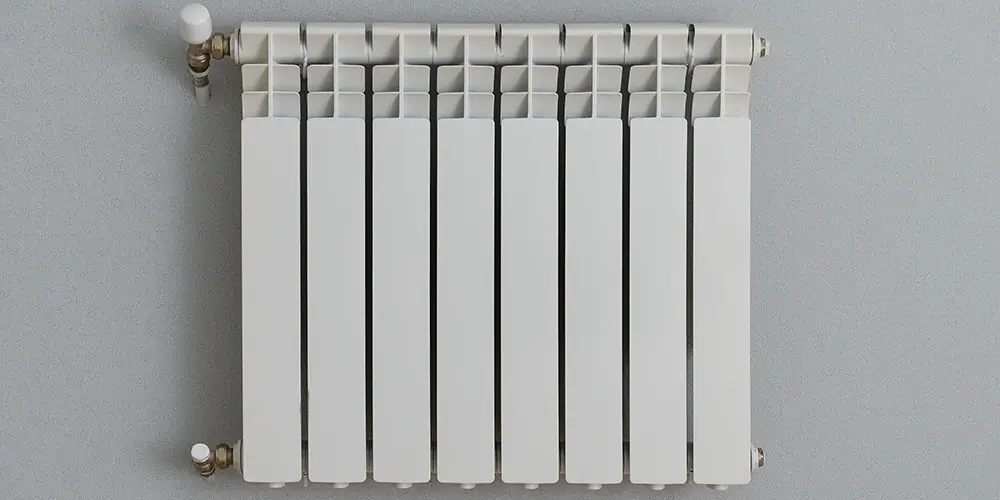Wall Heater Installation & Repair

Home and business owners looking to augment the heating in a single room without installing a new HVAC system may want to consider a wall heater.
Supplemental wall heating is ideal for:
- Poorly insulated rooms that tend to be cold
- North-facing rooms that don’t get enough sunlight to stay warm
- Large rooms with high ceilings that require more heat than usual
- Rooms where you spend most of your time (e.g., living room, home office)
Like all heating appliances, wall heaters need maintenance, repair, and eventual replacement.
West Coast Chief services all models and brands of gas and electric wall heaters.
What’s a Wall Heater?
A wall heater is a heating appliance mounted on a wall to heat the air in a single room, apartment, or small home. It’s fueled by natural gas, propane, or electricity.
Gas wall heaters connect directly to a gas or line and produce heat through combustion. Electric wall heaters generate heat with electrical resistance.
Gas wall heaters come in vented or ventless models.
Ventless gas heaters are more efficient but can lower oxygen levels inside a room. Vented units remove combustion byproducts from the interior air, making them safer but less efficient.
Why Choose Wall Heating?
There are several compelling arguments for supplemental wall heating units:
- Wall heaters are cheaper to install than a new HVAC system.
- They can be placed in any room without major renovations, even if there’s no ductwork.
- Most wall heaters come with built-in thermostats to control the temperature of a room independent of your HVAC system. Some models work with advanced programmable thermostats.
- They operate more quietly than forced air furnaces.
- They don’t blow dust and allergens around the room and can be paired with a humidifier to improve indoor air quality.
- Modern gas wall heaters have safety features that shut them down if carbon monoxide levels get too high.
Wall heaters were most popular before the widespread adoption of central heating. Today, people deploy them more tactically:
- As a supplemental heating source in larger homes
- In small apartments or studios where space is limited
- In commercial buildings, such as offices or retail stores
- As the sole source of heat in a small home or cabin
And, of course, wall heaters abound in many older LA-area apartments, homes, and commercial buildings.
Even now, replacing an aging wall heater may be cheaper and more practical than installing a new central heating system.

Disadvantages of Wall Heaters
Wall heaters may not be effective in large rooms. They average only half the heat output of central forced-air furnaces per energy unit.
Some problems specific to gas units include:
- Risk of carbon monoxide poisoning if not used properly
- More challenging to install (professionals only!)
- Vented models need special ductwork
Electric Wall Heaters vs. Gas
Gas wall heaters cost more to install because of their gas connection (and sometimes special ventilation), but they’re cheaper to operate in the long run. Gas-fired units also heat a room faster than electric models.
Electric heaters are safer and easier to maintain. You’ll never have to worry about fumes or combustion byproducts.
Vented Gas Wall Heaters
A vented gas wall heater has an inner chamber for combustion, an outer protective shell, and a venting system.
The venting system pulls oxygen from the outside air to support combustion and transfers dangerous combustion byproducts outside.
This makes vented gas wall heaters slightly less efficient than their ventless counterparts, but they’re safer because they don’t lower the oxygen levels inside a room.
Vented gas wall heaters are a good choice for:
- Families with young children or pets
- Individuals with respiratory problems
- Rooms that aren’t well-ventilated
Ventless Gas Wall Heaters
A ventless gas wall heater doesn’t have a venting system. Instead, it uses the air inside the room for combustion.
While this makes ventless gas wall heaters more efficient, it also means that they can lower the oxygen level in a room.
To prevent hazardous conditions, most ventless units have built-in safety devices that turn off the gas flow if oxygen levels get too low.
Ventless gas wall heaters are a good choice for:
- Well-ventilated rooms
- Homes with an existing HVAC system
Electric Wall Heaters
Electric wall heaters use electrical resistance to generate heat. They’re one of the safest and most efficient supplemental heating options.
Electric wall heaters are a good choice for:
- Families with young children or pets
- Individuals with respiratory problems
- Locations where it’s not possible to install a gas line (like apartments)

Types of Wall Heaters
There are several types of wall heaters (beyond fuel source), each with its pros and cons.
Convection Wall Heaters
Convection wall heaters use a fan to circulate air around the room. They’re efficient, but they can be noisy.
Radiant Wall Heaters
Radiant wall heaters use infrared waves to generate heat. They’re very efficient and provide instant warmth, but they can be expensive.
Baseboard Wall Heaters
Baseboard wall heaters are the most common type of electric wall heater. They’re inexpensive and easy to install but aren’t as efficient as other heaters.
Signs Your Gas Wall Heater Needs Repair or Replacement
Critical components of a gas wall heater include the pilot light or electronic igniter, a gas flow valve, a thermostat, and a heat-sensing electrical device called a thermocouple.
Any of these components can fail over time, making your heater less efficient or creating a safety hazard. Indications of trouble include:
- The pilot light keeps going out
- Pilot ignition failure
- Failure to operate even with a functioning pilot light
- An electronic igniter that won’t produce a spark
- A thermostat that won’t track changes in room temperature
- Gas odor or unpleasant smells
- A unit that shuts down in the middle of its heating cycle
Call us if you suspect any malfunction. We’ll determine if you need emergency, scheduled, or routine servicing.
And if your wall furnace has reached the end of its lifespan, we’ll help you select an energy-efficient replacement and install it for you.
Wall Heater Installation: Leave It to the Pros
Some homeowners try to save a buck by installing wall heaters DIY. That’s usually a bad idea.
- Wall heater installation is a complicated and dangerous task. Gas wall heaters can be hazardous because they use explosive natural gas. One mistake during installation could lead to a deadly gas leak.
- Wall heater installation often requires a permit. Completing the project without one puts you at risk of being fined by the city.
- Most insurance companies won’t cover damages resulting from unpermitted work. In case of a fire (due to your faulty wiring or leaky gas line installation), you could be left with a massive repair bill and no way to pay for it.
Installing a wall heater is no job for amateurs. Unless you’re a licensed contractor with experience, leave it to the professionals.
West Coast Chief hires only NATE-certified HVAC technicians to do all heating installation, from complex commercial systems to the humble wall heater.
Signs Your Electric Wall Heater Should Be Replaced
Just like any other appliance, electric wall heaters don’t last forever.
Here are signs that your heater is reaching the end of its life:
- It’s more than 20 years old.
- It doesn’t heat as well as it used to.
- It’s making strange noises.
- It’s starting to rust.
- It’s using more energy than it used to.
If you notice any of these things, it may be time to start shopping for a replacement. Please hire a professional contractor like West Coast Chief Repair to handle the installation!
4 Troubleshooting Tips for Your Electric Wall Heater
Before you call us for electric wall heater repair:
1. Check the heater
- Make sure that the heating element is clean and unobstructed. Wipe it down with a damp cloth.
- Inspect the heating element for signs of damage or test it with a multimeter. If it’s burned out, you’ll need to replace it.
- Make sure that the blower motor is working to circulate air around the room.
2. Check the wiring
- Check all connections; loose connections can cause overheating and fires.
- Check for any signs of damage to the wires. Fraying or broken will have to be replaced.
3. Check the circuit breaker
- If the circuit breaker has been tripped, reset it and see if that solves the problem.
4. Check the thermostat
- If the wall heater is on but not heating, the problem may be with the thermostat. Test it with a multimeter to see if it’s working properly.
And if you’re like 90% of the Los Angelenos who don’t keep a multimeter handy, call us. We have dozens of multimeters, and they all come fully equipped with a certified heating technician!
We answer the phones 24-7.